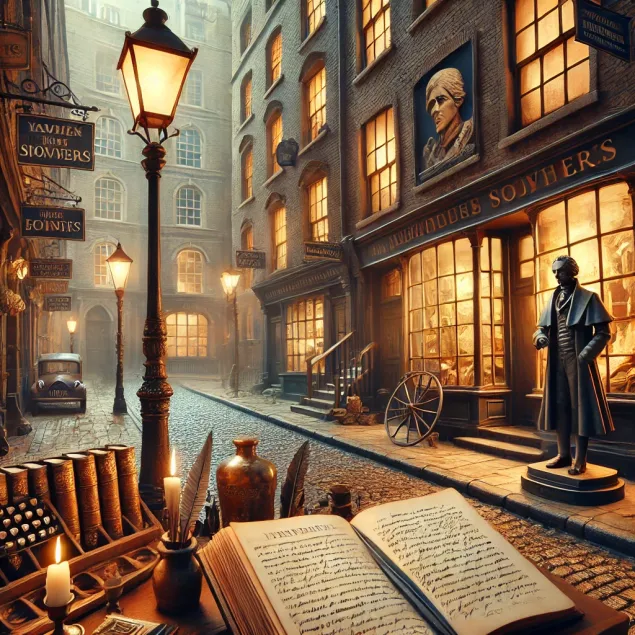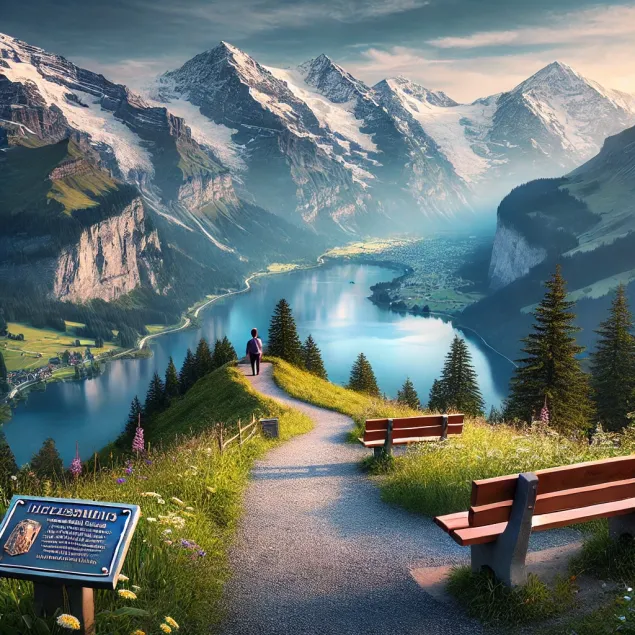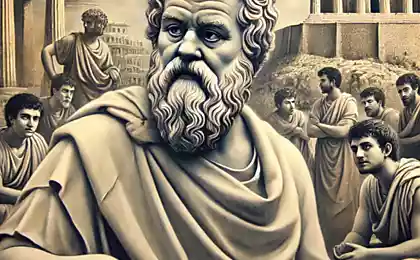211
Journeys in the footsteps of great thinkers: routes that inspire

Introduction. Books, great ideas, scientific discoveries and philosophical treatises often originate not only in the mind of their author, but also in the space that surrounded him at the time of his creative insights. Sometimes the colors of the sunset, protected trails or quiet streets of ancient cities had a stronger influence than one might imagine. Thus were born works that turned the history of mankind, and theories that laid the foundation of modern sciences. In this article, we suggest traveling to the places where famous philosophers, writers and scientists lived and worked - because, as experience shows, the atmosphere of these locations can awaken in us an interest in new discoveries, push to extraordinary ideas and give inspiration.
Athens: The Cradle of Western Philosophy
Let’s start with Greece, the cradle of Western civilization. It was here that Socrates, Plato and Aristotle were born, who laid the foundation of philosophical thought. In Athens, where antique culture is felt at every turn, history merges with the modern rhythm of the city.
See what?
- Agora. Here, in the open air, Socrates and his contemporaries held public conversations, and traders argued about politics no less hotly than economics. The noise and movement of ancient markets is a great illustration of the idea of democracy and free speech.
- Plato's Academy. One of the first philosophical schools in the world. Although little remains of the ancient Academy, a walk through the picturesque park, where discussions were conducted about the immortality of the soul and the nature of the state, can provide no less food for the mind than a whole library of treatises.
- Aristotle's Lyceum. In this place, the teacher of Alexander the Great studied ethics, logic, biology and physics. Now here you can see the excavations and feel the spirit of scientific research, stored in ancient stones.
Modern Athens offers a rich selection of excursion programs, allowing you to plunge into the atmosphere of times when philosophy was a living practice, and not just a subject of study in universities. Greek cuisine and informal atmosphere of cozy cafes will be a pleasant bonus for the traveler. It is no secret that many ideas are born after a leisurely conversation under a glass of fragrant wine.
Königsberg (Kaliningrad): City of Immanuel Kant
Fast forward to another era and another geographical point: the German city of Koenigsberg, which is now called Kaliningrad. It was here that the great philosopher Immanuel Kant (1724-1804) spent his whole life, whose works determined the development of Western philosophy for many centuries to come.
Itinerary for inspiration
- Cathedral. Within its walls lies the tomb of Kant. Amazing Gothic architecture emphasizes the monumentality of the ideas of the great thinker.
- University of Albertina (now I. Kant BFU). It was here that Kant lectured on metaphysics and logic. For lovers of the history of philosophy, you should pay attention to the archives of the university.
- Philosophical trail. It is said that Kant liked to take daily walks at the same time. According to legend, the townspeople could compare the clock to his exact schedule. Walking through the places where the ideas of the Critique of Pure Reason were born can become a symbolic practice of introspection.
Visiting Kaliningrad, you can see how ancient German traditions mixed with Soviet architectural layers and modern Russian culture. This mix also symbolizes the very nature of Kant's thought - deep, systematic, but open to renewal.
Weimar: following Goethe and Schiller

The small German city of Weimar is known as the center of cultural life of the Classicist era. Johann Wolfgang von Goethe and Friedrich Schiller worked here. Goethe came to Weimar in 1775 and lived there for most of his life, while Schiller moved there later, working closely with the genius of Faust. Their friendship, despite their differences in character, became an example of mutual respect and exchange of ideas.
Key locations
- Goethe House Museum. Here, among the old furniture and manuscripts, a special creative atmosphere has been preserved. While living in Weimar, Goethe worked on dramatic works, including Iphigenia at Tauris and Torquato Tasso.
- Schiller's house. Comparatively modest in size, but very authentic, it has retained the home comfort where the last pages of William Tell were created.
- Weimar Park on the Ilm River. In the alleys of this park, Goethe liked to take long walks. Natural landscapes largely influenced his style in poetry and the development of so-called Weimar classicism.
Weimar is a corner of old Germany, where the era of enlightenment and romanticism literally breathes in the old streets. The city became a hotbed of cultural transformations that inspired not only German literature but also European thought.
Swiss Alps: Places of Nietzsche and Paul Klee
Switzerland is famous not only for its lakes, chocolate and banks, but also for the fact that its mountain landscapes have inspired many thinkers and artists. One of them was Friedrich Nietzsche, who spent the summer months in Sils Maria, drowning in Alpine landscapes.
Nietzsche in Sils Maria
- Nietzsche House. A small museum dedicated to the work of the philosopher, where he wrote a part of “Thus spoke Zarathustra”. The quiet environment and harsh mountain landscape allowed him to plunge into deep reflections about the will to power and eternal return.
- Hiking trails along Lake Sils. The high mountain lake is framed by majestic mountains, creating the impression of solitude and eternity. According to Nietzsche, it was here that he felt "crystal clarity of thought."
In another Swiss city, Bern, for many years lived Paul Klee - an artist whose creative manner combines elements of expressionism, surrealism and abstraction. His house and workshop are preserved in the suburbs, and the main collection of works is in the Paul Klee Center. If your goal is to imbue yourself with an experimental spirit, then a visit to his museum will be a real revelation. A panoramic view of the Alps, accompanying trips to Switzerland, enhances the impression of thoughts about the place of man in the universe and the harmony of nature and creativity.

Cambridge: City of Scientists and Discoveries
Traveling in the footsteps of geniuses, you can not ignore Cambridge in the UK. This campus became the cradle of scientific ideas that changed the world. Many great minds studied and worked here: Isaac Newton, Charles Darwin, Alan Turing, Stephen Hawking and a whole galaxy of Nobel laureates.
Where do you feel the spirit of exploration?
- Trinity College (Trinity College) It was here that Isaac Newton studied physics and conducted experiments on optics. Take a stroll through the famous “Great Court” courtyard and look at the apple tree – in memory of the famous legend of the apple that “given” it. Newton has an insight into the law of gravity.
- The Sedgwick Museum. Darwin, as a student, was here many times, studying the geological collection and forming his first hypotheses about the development of life on Earth.
- The Cambridge Mathematical Bridge. According to architectural legend, the bridge was designed in such a way that no nails were used during its construction (which in reality is not quite so). But it became a symbol of the mathematical and engineering precision associated with Cambridge.
This city is imbued with the spirit of curiosity and intellectual search. Visiting Cambridge, you will feel how closely history and modernity are intertwined here: in the quiet old courtyards, students still exchange ideas that are likely to become the new word in science tomorrow.
Conclusion: Inspiration Beyond Textbooks
Routes to places where great thinkers, writers and scientists worked are not just an excursion into the past. This is an opportunity to first-hand understand how the spatial environment, climate, national peculiarities and even the noise of urban bustle could contribute to or, on the contrary, hinder the process of birth of brilliant ideas. We often underestimate the context in which the mind works. However, as history shows, even the most abstract theories grow out of a person’s real experience of his environment: whether it is walking through ancient ruins, a walking route in Koenigsberg or the mountainous landscapes of Switzerland.
Today’s travelers can expand the horizon not only with entertainment and gastronomy, but also with meaningful immersion into the past. The places where Kant’s lectures were once heard, or where Goethe composed poems, bear the invisible imprint of human thought. And if you decide to go to these corners of the world, try to move away from the banal tourist scheme and instead of a cursory inspection of the "sights" consciously feel the atmosphere: walk slowly, think, imagine how ideas were bubbling around and masterpieces were born that still excite humanity.
Unexpected masterpieces: little-known artists who changed art
Why Laughter Prolongs Life and How to Learn to Laugh More























